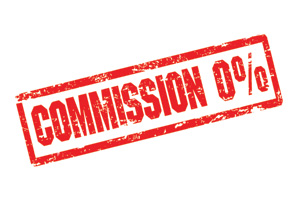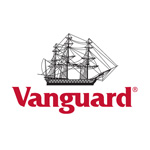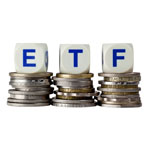 There are over 1,400 Exchange Traded Funds (ETFs) on the market. With so many available choices, it's difficult to know which ones to use. Major brokers such as Charles Schwab, TD Ameritrade, Vanguard, and Fidelity offer commission-free trading for a number of ETFs. To keep investment expenses as low as possible, it's a good idea to use a zero-commission ETF when available.
There are over 1,400 Exchange Traded Funds (ETFs) on the market. With so many available choices, it's difficult to know which ones to use. Major brokers such as Charles Schwab, TD Ameritrade, Vanguard, and Fidelity offer commission-free trading for a number of ETFs. To keep investment expenses as low as possible, it's a good idea to use a zero-commission ETF when available.
We examined ALL commission-free ETFs at the major brokers available as of today, and ran a series of correlation studies against the 9 ETFs used by our Adaptive Portfolios. These represent all major asset classes such as U.S., European and Emerging Markets stocks, medium and long term bonds, domestic and international real estate, commodities, and precious metals (gold). The table below summarizes the best zero-commission ETFs at every broker. The "Preferred Symbol" column lists the ETF used in our model portfolios. Commission-free alternatives are then listed for each broker:
| Asset Class |
Preferred Symbol |
Ameritrade Alternative [Details] | Schwab Alternative [Details] | Vanguard Alternative [Details] | Fidelity Alternative [Details] |
|---|---|---|---|---|---|
| U.S. Stocks | SPY | VTI | SCHX, SCHB | VTI, VOO | IVV |
| Medium-Term U.S. Bonds | IEF | - | SCHR | - | IEF |
| Long-Term U.S. Bonds | TLT | TLT | TLO ?[1] | VGLT ?[4] | TLT |
| European Stocks | IEV | VGK | SCHF[2] | VGK | IEV |
| Emerging Markets Stocks | EEM | VWO | SCHE | VWO | EEM |
| U.S. Real Estate (REITs) | ICF | VNQ | SCHH | VNQ | IYR |
| International Real Estate | RWX | RWX | - | VNQI | - |
| Commodities | DBC | DBC | USCI ?[3] | - | - |
| Gold | GLD | - | SGOL | - | - |
Refer to the table to find the best commission-free alternative at your broker of choice. If no symbol is listed for a particular choice, that means that there simply isn't a free alternative at that broker with sufficiently high correlation to be used as a proxy. In that case, the best option is to just stick with the fund listed in the "Preferred Symbol" column.
For more details on our methodology and correlation studies, see this post, or click through to any of the detailed fund analyses for each broker.
Notes
- For detailed analysis, see here. The SPDR Barclays Capital Long Term Treasury ETF (TLO) has a correlation of 0.92 to TLT. This is on the low side of what we'd like to see, so it's not a true proxy. The TLO fund tracks the long term (10+ years) sector of the United States Treasury market, sampling the Barclays Long U.S. Treasury Index. This is somewhat different from TLT, which tracks the Barclays U.S. 20+ Year Treasury Bond Index, a more volatile index that will usually yield better returns when used in our adaptive portfolios.
- Schwab International Equity ETF (SCHF) tracks the FTSE Developed ex-US Index. While this is different from the index tracked by IEV (S&P Europe 350), the Schwab fund nonetheless has a reasonably high 0.976 correlation to IEV.
- United States Commodity Index (USCI) replicates the SummerHaven Dynamic Commodity Index Total Return. This is a different index from the one tracked by the DBC fund (Deutsche Bank Liquid Commodity index), and the correlation between these funds (0.895) is lower than what we'd like to see. Not a true proxy for DBC.
- The Vanguard Long-Term Government Bond Index ETF (VGLT) tracks the Barclays U.S. Long Government Float Adjusted Index (bonds with maturities greater than 10 years). This is somewhat different from TLT, which tracks the Barclays U.S. 20+ Year Treasury Bond Index, a more volatile index that will usually yield better returns when used in our tactical strategies. Nonetheless, the correlation between VGLT and TLT is reasonably high, at 0.966.






Comments
To add a comment, please Sign In.